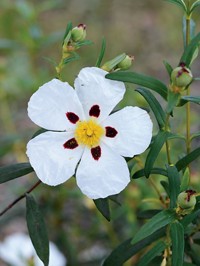Advertisement
Grab your lab coat. Let's get started
Welcome!
Welcome!
Create an account below to get 6 C&EN articles per month, receive newsletters and more - all free.
It seems this is your first time logging in online. Please enter the following information to continue.
As an ACS member you automatically get access to this site. All we need is few more details to create your reading experience.
Not you? Sign in with a different account.
Not you? Sign in with a different account.
ERROR 1
ERROR 1
ERROR 2
ERROR 2
ERROR 2
ERROR 2
ERROR 2
Password and Confirm password must match.
If you have an ACS member number, please enter it here so we can link this account to your membership. (optional)
ERROR 2
ACS values your privacy. By submitting your information, you are gaining access to C&EN and subscribing to our weekly newsletter. We use the information you provide to make your reading experience better, and we will never sell your data to third party members.
Business
Cyclodextrins Could Enhance Paint
Sugar-based molecule to help walls stay clean and pleasant smelling
by Marc S. Reisch
October 16, 2006
| A version of this story appeared in
Volume 84, Issue 42

COVER STORY
Cyclodextrins Could Enhance Paint
Ring-shaped sugar-based molecules that resemble short ice cream cones may soon enable paint makers to add a pleasant fragrance to wall paints. Such a fragrance could last three or more years after the paint has dried on the wall. Marlies Regiert, business and sales development manager at Wacker Specialties, says her company has already patented the use of the sugar-based cyclodextrin molecules to deliver fragrance incorporated into paint. And once the fragrance is gone, these same molecules would still be at work on the wall absorbing unpleasant odors for years to come.
Because of their unique cone shape, cyclodextrins can host guest molecules much like a cone holds a scoop of ice cream, Regiert says. Manufactured under anhydrous conditions, cyclodextrins release their active ingredients in the presence of moisture. As hydrophobic molecules, cyclodextrins can host oils and the fragrances in perfume.
Other firms have already taken advantage of the fragrance-yielding ability of cyclodextrins. About seven years ago, consumer products maker Procter & Gamble introduced a cyclodextrin-containing fabric spray called Febreze. When sprayed on a fabric, some of the cyclodextrins in the product release a pleasant fragrance. Other unfilled cyclodextrins in Febreze go to work absorbing odors (C&EN, March 1, 1999, page 25).
The consumer products giant has a number of patents protecting its use of cyclodextrins in laundry and fabric care. But Regiert says Wacker, which manufactures cyclodextrins, has patented other potential applications for the versatile molecules that it hopes to share with customers.
For instance, cyclodextrins could incorporate mildewcides, so that bathroom paints containing them would slowly release their active ingredients to keep painted surfaces mildew free. Cyclodextrins incorporating mosquito and insect repellants could keep rooms free of pests. Other cyclodextrins infused with tea tree oil might provide fragrance as well as antifungal and antibacterial properties, Regiert says.
Some home improvement uses are already a reality, Regiert says. The German adhesives maker Tesa incorporates cyclodextrins in wallpaper paste to provide a "fresh scent." Regiert expects other similar uses to come.



Join the conversation
Contact the reporter
Submit a Letter to the Editor for publication
Engage with us on Twitter